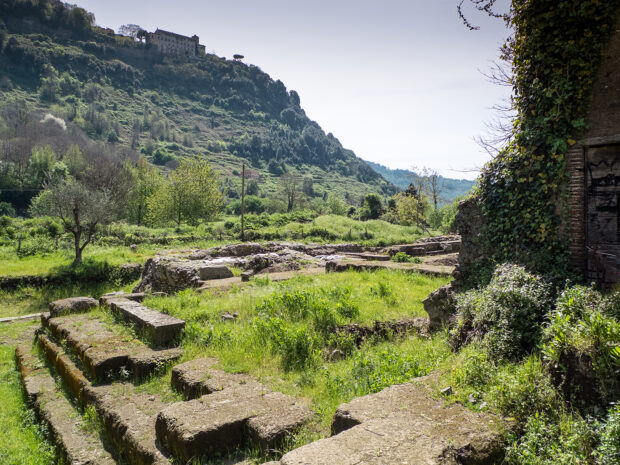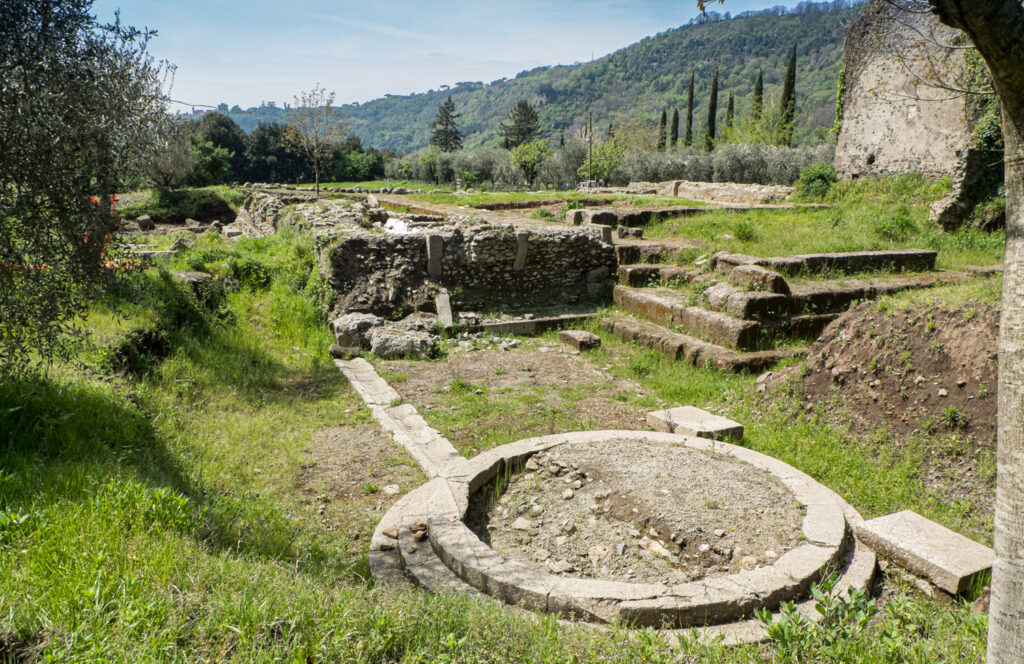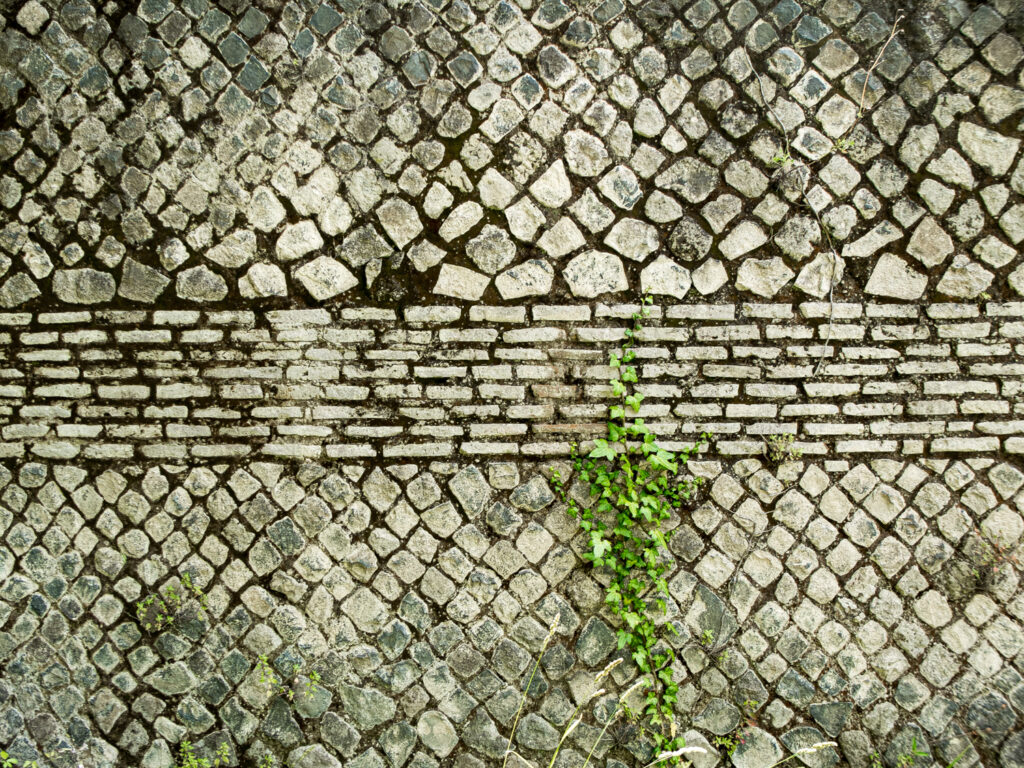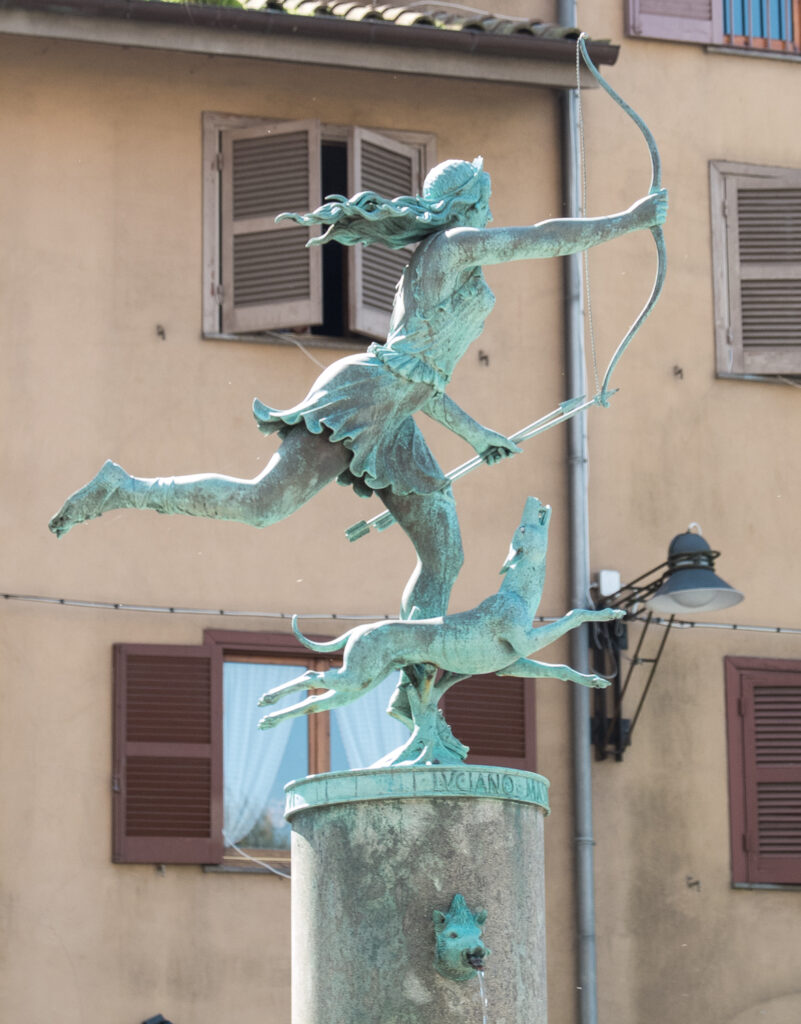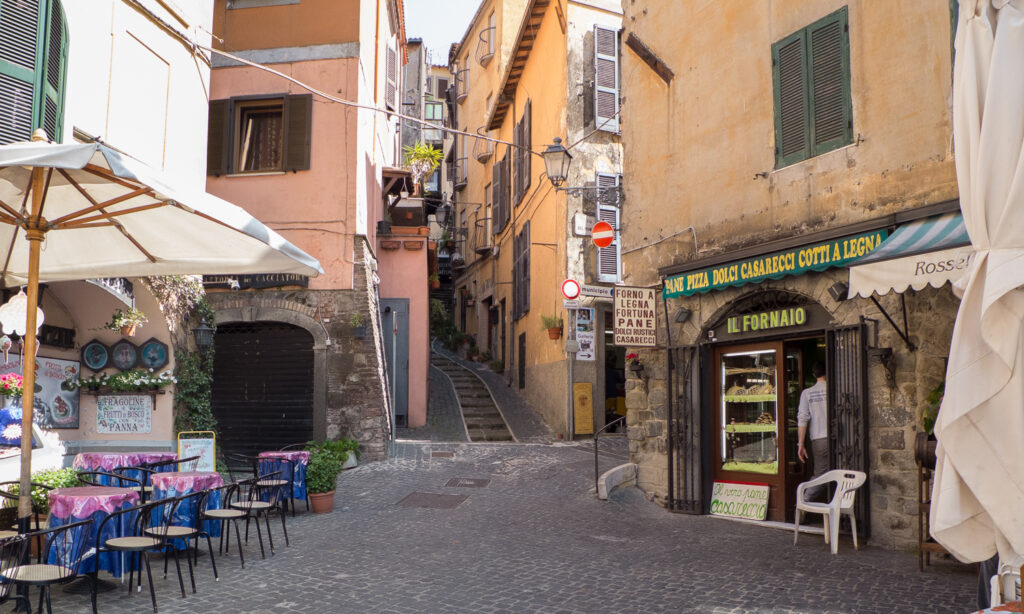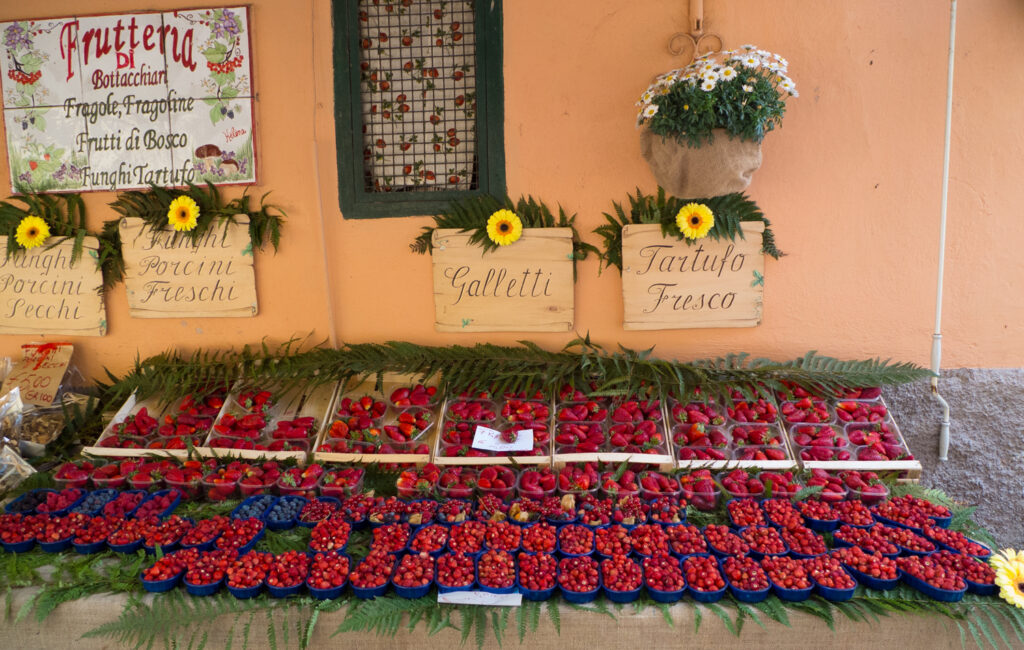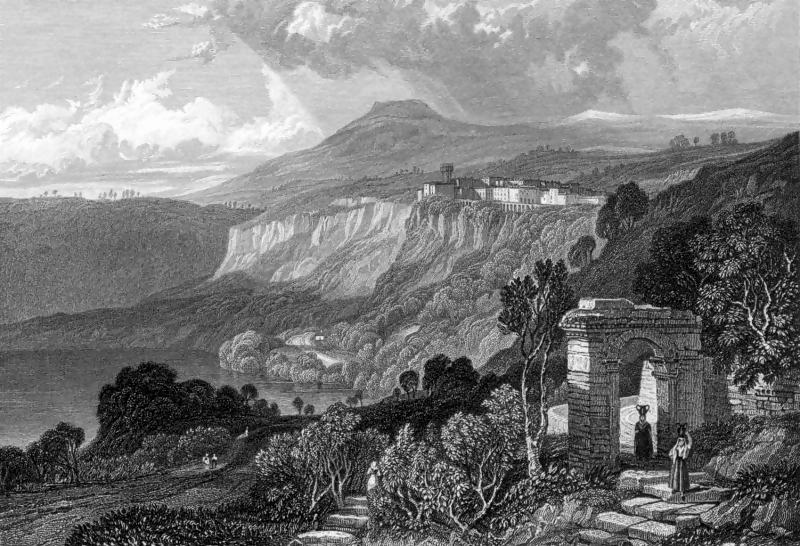Nemi and Lake Nemi below, are in the Alban Hills outside Rome. The village is known for its fantastic views as far as the sea, and for its strawberries both wild and cultivated. Beloved of poets such as Lord Byron and Goethe, and painters like Claude and Turner, it has been a favourite of visitors since the days of the Grand Tour in the 17th century.
Lake Nemi was sacred to the virgin goddess Diana, huntress and protector of childbirth the remains of her shrine have only been partially excavated. The moon is associated with her and the lake is called Speculum Dianae (Diana’s Mirror) – it particularly captivated the poets and composers who made their homes here.
The Roman emperors recreated naval battles known as Naumachie on nearby Lake Albano, a form of gladiatorial spectacle involving killing and actual sinkings. When they found submerged boats on Lake Nemi in the 1930s they were presumed to be pleasure boats rather than warships as Lake Nemi was a sacred lake. They were raised and a museum built, but sadly they were destroyed by accident during WW2.
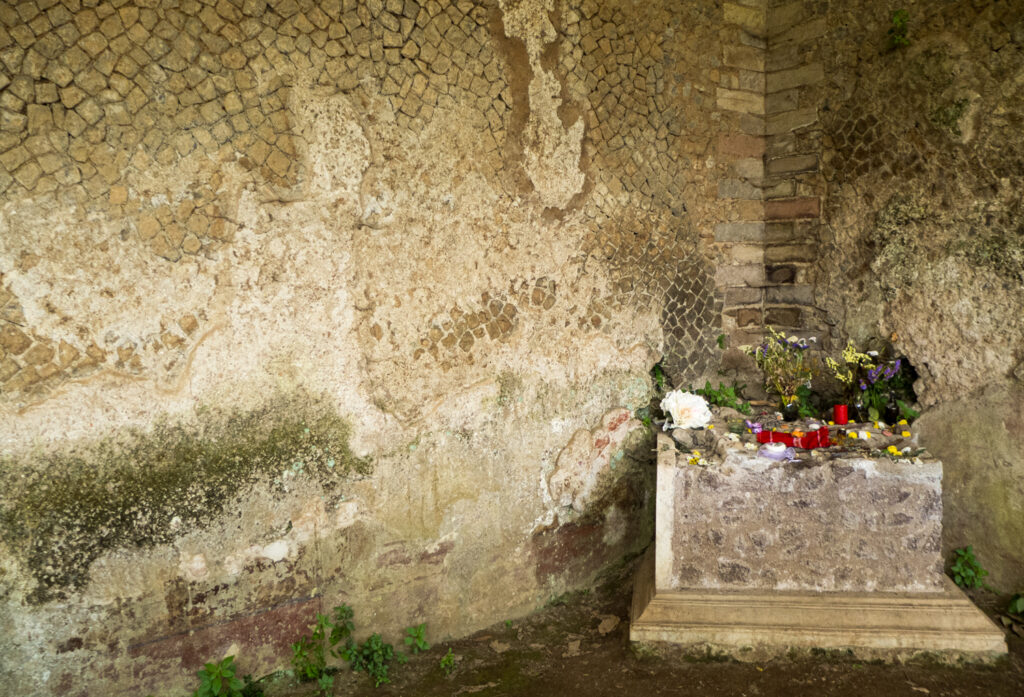
Diana’s altar, still in use by modern adherents to her cult, offerings of fruit, prayers and candles.
Nemi is also associated with the myth of Rex Nemorensis, the story of which begins and ends James Frazer’s famous work of anthropology, The Golden Bough (1890). The story goes that the high priest of the shrine at Nemi to Diana, achieved the role through mortal combat with his predecessor; he in turn would be slain by his successor, and so on through the ages. As Macaulay put it:
Those trees in whose dim shadow
The ghastly priest doth reign
The priest who slew the slayer,
And shall himself be slain.
The contender had first to prove his metal by plucking a golden bough (most likely mistletoe growing on the sacred oak) from Diana’s Grove, thus the origin of the legend. Recently, archeologists discovered the fossilised remains of an oak within the sanctuary. Cannabis was cultivated on the shores in ancient times and may have been involved in sacred rituals.
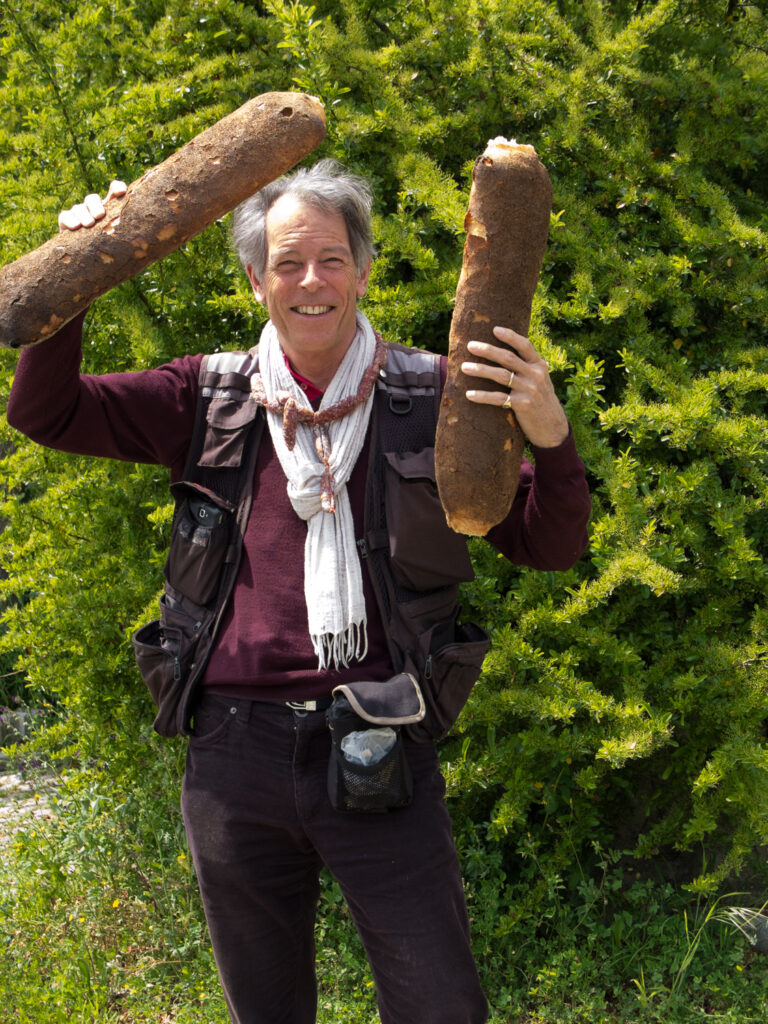
Patrick holds up the famous bread, baked in wood-fired ovens, in nearby Genzano (with a wild boar sausage necklace).
